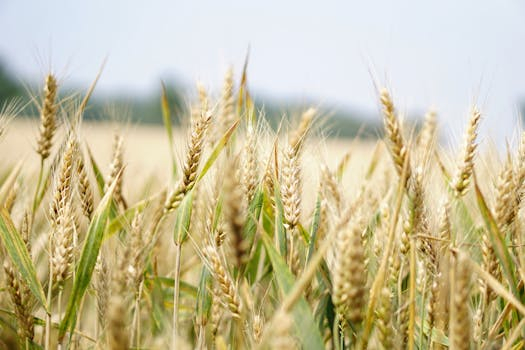Regenerative Agriculture and the Future of Sustainable Fabrics
The fashion industry has long been criticized for its negative impact on the environment and labor practices. From the use of toxic chemicals in production to exploitative sweatshop labor, the fashion industry has been far from sustainable. However, as the demand for eco-friendly and ethical fashion grows, many are turning to regenerative agriculture as a solution for creating sustainable fabrics. In this article, we will explore what regenerative agriculture is and how it can revolutionize the future of sustainable fabrics.
What is Regenerative Agriculture?
Regenerative agriculture is a holistic approach to farming that focuses on rebuilding and restoring soil health. This method goes beyond just sustainable farming practices and aims to create a regenerative ecosystem that can continue to support agriculture for generations to come. It focuses on utilizing natural processes, such as nutrient cycling and soil regeneration, to create a healthier and more resilient environment for crops to thrive in.
The principles of regenerative agriculture include minimizing soil disturbance, increasing diversity of crops and livestock, and using cover crops and crop rotation to replenish nutrients in the soil. This approach also promotes the use of natural fertilizers and pest control methods, reducing the need for synthetic chemicals that can be harmful to both the environment and human health.
One of the key components of regenerative agriculture is carbon sequestration. By implementing practices that increase soil organic matter, such as no-till farming and using cover crops, regenerative agriculture can help capture and store carbon in the soil. This not only serves as a solution for mitigating climate change, but it also improves soil health and productivity.
The Benefits of Regenerative Agriculture for Sustainable Fabrics
The fashion industry heavily relies on natural resources, particularly when it comes to the production of fabrics. According to the World Wildlife Fund, it takes 20,000 litres of water to produce just one kilogram of cotton, and it is estimated that the fashion industry is responsible for 20% of global water pollution. The use of synthetic fertilizers and pesticides also contributes to water pollution and biodiversity loss.
Regenerative agriculture offers a sustainable alternative to conventional farming methods used in the production of fabrics. By using natural processes to replenish soil nutrients, it reduces the need for synthetic chemicals and increases water efficiency. This not only has a positive impact on the environment but also makes the production of fabrics more economically viable for farmers.
One of the most promising benefits of regenerative agriculture for sustainable fabrics is its potential to create a closed-loop system. This means that fabrics can be produced without depleting resources or causing harm to the environment. The use of natural materials, such as organic cotton, hemp, and linen, in combination with regenerative agriculture practices, can create a truly sustainable and circular fashion industry.
The Future of Sustainable Fabrics
The demand for sustainable and ethical fashion is on the rise, and regenerative agriculture offers a solution that can transform the fashion industry. Many fashion brands, from luxury designers to fast-fashion retailers, are starting to incorporate sustainable fabrics into their collections. With the implementation of regenerative agriculture, these fabrics can become more environmentally friendly and socially responsible.
Besides the environmental and social benefits, regenerative agriculture also has economic advantages. By reducing the use of synthetic chemicals and increasing water efficiency, it can lower production costs and increase profit margins for both farmers and fashion brands. This can attract more farmers to adopt regenerative agriculture practices and make sustainable fabrics more accessible and affordable for consumers.
In Conclusion
Regenerative agriculture has the potential to revolutionize the way fabrics are produced, making the fashion industry more sustainable and ethical. By focusing on rebuilding and restoring soil health, it offers a solution that addresses both environmental and social issues. As more fashion brands and consumers turn towards sustainable and circular fashion, regenerative agriculture will play a crucial role in the future of sustainable fabrics.
With the growing awareness and demand for sustainable practices, regenerative agriculture is gaining momentum in the fashion industry. It offers a solution that not only benefits the environment but also has economic advantages. By supporting regenerative agriculture, we can create a more sustainable and ethical fashion industry that can pave the way towards a better and brighter future.










